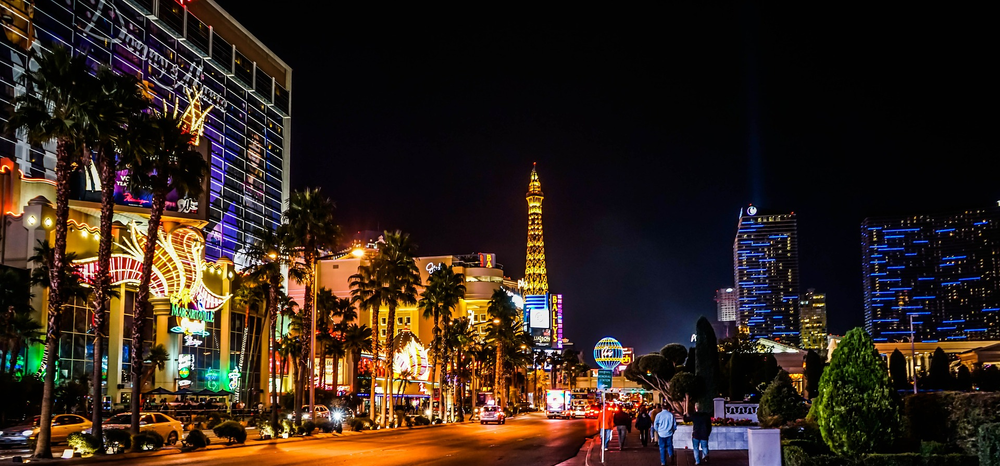Grand Teton National Park is one of the most visited national parks in the United States, yet many of its visitors only see it as a side attraction while visiting the more famous Yellowstone National Park that is located nearby. In our Grand Teton National Park guide, we aim to change all of that.
Grand Teton National Park is a stunning natural location that is filled with incredible scenery and amazing sights and attractions. In the following article we will explain just why what makes it such a special destination and help you plan a perfect travel itinerary so that you can visit it yourself.
We will include tips on when to go and how long to stay to the best things to do and see and where to stay when you arrive. So, if you want to visit Grand Teton National Park yourself but don’t want to miss any of the highlights along the way, I highly suggest reading on.
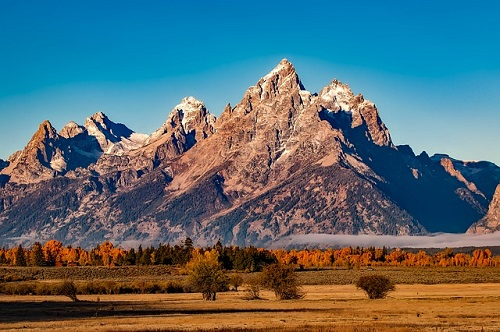
Facts & Figures About Grand Teton National Park
With almost 3.9 annual visitors, Grand Teton National Park is the 7th most visited national park in the United States. Being founded on the 26th of February 1929 makes it the 18th oldest national park in the U.S., while its 310,000 acre area makes it the 25th largest in the nation.
The park centres around the Teton Range, the youngest mountain range in the Rocky Mountains. It is named after its tallest peak, Grand Teton, which stands 13,775 feet (4,200 metres) tall.
Set in the Jackson Hole valley in the very west of Wyoming, the park was created to protect these mountains.
Jackson Hole National Monument was then created adjacent to the park in 1943. However, it was abolished just 7 years later, in 1950, at which point its lands were added to Grand Teton National Park, significantly expanding it.
Grand Teton National Park is the only national park in the United States to feature its own airport, Jackson Hole Airport. Along with Yellowstone National Park and the surrounding national forests, it is also part of one of the largest protected areas in the nation, which covers nearly 18 million acres.
Grand Teton National Park Temperature
The Grand Teton National Park Temperature usually ranges between a low of 1.2°F (-17.1°C) and a high of 81.7°F (27.6°C). The highest temperature ever recorded in the park is 97°F (36°C) and the lowest is -46°F (-43°C).
The highest temperatures in the park occur between June and September, while the coldest stretch is from November to March.
The park sees a good amount of precipitation year round, although the months of July and August tend to be reasonably dry. This takes the form of heavy snowfall from late October to mid-April.
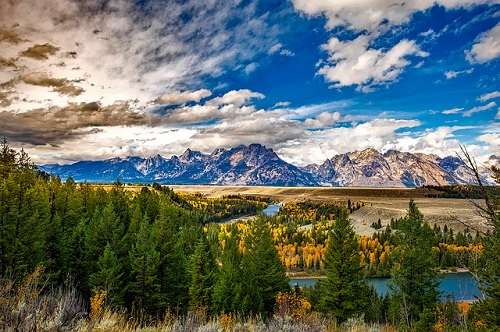
The Wildlife & Landscape Of Grand Teton National Park
Grand Teton National Park is known for its mountainous landscape, which also features a number of lakes, rivers, glaciers, and waterfalls. There is also a range of forests that feature a combination of alder, aspen, cottonwood, fir, pine, spruce, and willow trees.
There is even an extensive range of plant life in the park, including more than 1,000 types of vascular plants, and various species of bush, grass, lichen, moss, and wildflower. The wildlife of Grand Teton National Park is equally diverse, and you will find a huge variety of different species.
This includes badgers, bats, beavers, black bears, bighorn sheep, bison, chipmunks, cougars, coyotes, elk, hares, grey wolves, grizzly bears, lynx, marmots, marten, moose, mule deer, muskrats, otters, pika, porcupines, pronghorn, sagebrush lizards, squirrels, and wolverines.
There are also over 300 species of birds, and at least 10 species of fish, six species of amphibians, four species of reptiles, three species of snakes, and more than 10,000 different insect species.
How To Get To Grand Teton National Park
Grand Teton National Park is the only national park in the nation to feature its own airport, Jackson Hole Airport. As the busiest airport in Wyoming, this makes getting to Grand Teton National Park extremely easy for most.
For international travellers or those from destinations that don’t fly to Jackson Hole Airport, the closest major airport to Grand Teton National Park is Salt Lake City International Airport in Utah. This is 270 miles (435 km) away and takes 5 hours to drive to.
Best Time To Visit Grand Teton National Park
The best time to visit Grand Teton National Park is in the months of July and August. This period provides the perfect combination of warm, dry weather, to ensure you can enjoy the park and all of its various attractions in the best conditions possible.
However, for those who plan to visit Grand Teton National Park for the snowy activities it offers, you will want to visit between late November and early April.
This window will ensure there is plenty of snow on the ground and the temperature is low enough to guarantee you can do all of the activities you have planned.
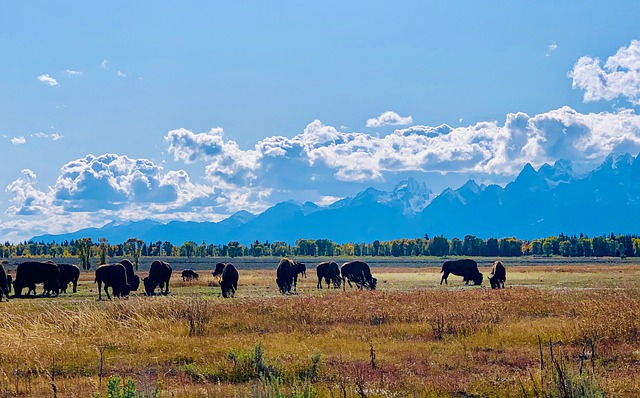
Top Attractions In Grand Teton National Park
Now you know a little more about your destination, it’s time we look at the top attractions in Grand Teton National Park. This will allow you to plan the perfect travel itinerary for when you visit Grand Teton National Park for yourself.
Take In The Beauty Of The Park On The Grand Teton Scenic Drive
The Grand Teton Scenic Drive is a 42 mile (67.5 km) circular route made up of Teton Park Road and U.S. Route 191. The scenic drive circles the entire park, from north to south, making it a great way to see all of the sights in the most relaxing way possible.
It passes popular scenic points and overlooks like Blacktail Ponds Overlook, Elk Ranch Flats Turnout, Glacier View Turnout, Mountain View Turnout, Mount Moran Turnout, Oxbow Bend, Snake River Overlook, Potholes Turnout, Schwabacher Landing, Teton Glacier Turnout, and Teton Point Turnout.
You then have the attractions it runs through, like the J.P. Cunningham Cabin, Jackson Lake Dam, Jenny Lake Visitor Center, and Mormon Row Historic District. Put it all together and the Grand Teton Scenic Drive lets you see the very best the park has to offer, without ever having to leave the car.
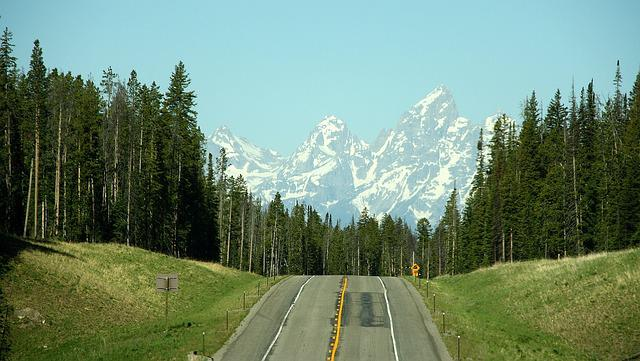
Go Climbing In The Teton Range
With the park being centred around the Teton Range of mountains, Grand Teton National Park is understandably a hotspot for climbing enthusiasts. This activity is made even more enticing by the fact that many of the most popular peaks are accessible by road.
The tallest section of the range is the Cathedral Group, named due to its resemblance to cathedral spires. This includes the tallest peak in the range, Grand Teton, as well as Middle Teton, South Teton, Mount Owen, Disappointment Peak, Nez Perce, and Teewinot.
Other peaks in the range include Albright Peak, Buck Mountain, Housetop Mountain, Mount Moran, Mount Bannon, Mount St John, Mount Wister, Prospector’s Mountain, Rendezvous Peak, Static Peak, Storm Point, Battleship Mountain, Table Mountain, Taylor Mountain, and The Wall.
Spanning 40 miles (64 km) and with heights ranging up to 13,775 feet (4,200 m), there are plenty of opportunities for climbers of all abilities to have fun and test their skills in Grand Teton National Park. More than 4,000 people attempt to reach the peak of Grand Teton alone each year.

Explore The Various Historic Districts & Buildings Throughout The Park
Grand Teton National Park is a beautiful natural area that contains very few man-made structures, outside of visitor centres and the occasional ranch. However, those that are present are historic and are a great way to learn about the park’s past.
The Mormon Row Historic District is the largest and most famous group of historic buildings in Grand Teton National Park. It contains a collection of 27 buildings and 1 ruin that were built by Mormon settlers and local farmers and ranchers between the 1890s and 1950s.
It includes some of the most iconic buildings in the park, like the Andy Chambers Ranch and T.A. Moulton Barn, as well as a clear demonstration of the classic Mormon clustered communities. The Mormon Row Historic District was listed on the U.S. National Register Of Historic Places in 1997.
Other historic structures in the park include the J.P. Cunningham Cabin, built in 1888 in the traditional Appalachian style, the Chapel Of the Sacred Heart and Chapel Of The Transfiguration wooden churches, and a small collection of isolated cabins and ranches.
There is even the Jackson Lake Dam, a concrete dam built in 1916 between Jackson Lake and Snake River. Between these you can witness some absolutely stunning locales and get a true idea what the area has looked like at different times through the years.
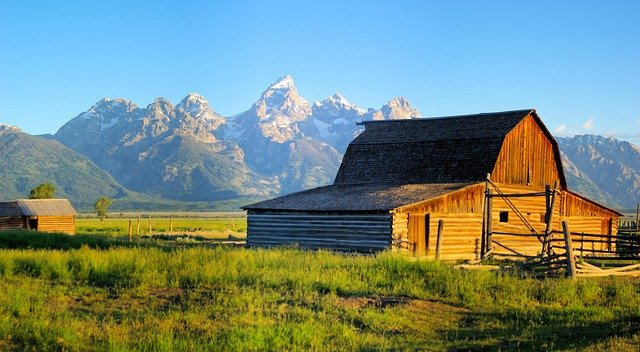
Get An Education At The Grand Teton National Park Visitor Centers
Visitor centres are often seen as just a way to get some basic information about a park or purchase souvenirs. However, in recent years, a concerted effort has been made to turn each Grand Teton National Park Visitor Center into an attraction all of its own.
The Craig Thomas Discovery & Visitor Center, named after former Wyoming Senator Craig Thomas, is located in a building boasting stunning architecture and a 154 seat auditorium.
Here you can see talks and films about the park, while exhibits on mountaineering, nature, and the park’s history, containing artefacts, maps, and videos, are all on display.
The Colter Bay Visitor Center & Indian Arts Museum in Colter Bay Village has housed the David T. Vernon Indian Arts Exhibit and its extensive collection of artefacts for more than 50 years. This makes it an ideal stop for anyone interested in the culture of the region’s Native American tribes.
The Laurance S. Rockefeller Preserve Center is in Jackson Hole’s original dude ranch, the JY Ranch, while the Jenny Lake Visitor Center is housed in Harrison R. Crandall’s historic 1920s art studio.
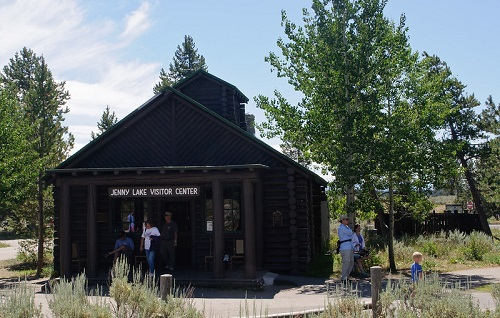
Relax On The Many Lakes Found In The Park
Throughout Grand Teton National Park there are more than 100 lakes, which can be found at varying altitudes, giving each its own appeal.
Jackson Lake and Jenny Lake are the park’s largest lakes. Both have boat launches and allow the use of motorised boats, for those seeking a slightly more high speed adventure, while Jackson Lake is the only place in the park where you can enjoy activities like sail boating, water-skiing, and windsurfing.
Those who want to use various types of non-motorised boats also have options like Bearpaw Lake, Bradley Lake, Emma Matilda Lake, Icefloe Lake, Lake Solitude, Leigh Lake, Phelps Lake, String Lake, Taggart Lake, and Two Oceans Lake.
You can even go boating on Snake River, but all other waterways are off limits to public boats. You will also need a permit to go boating, wherever you chose to do so.
For those who aren’t interested in boating, activities like fishing and swimming are also extremely popular in most of Grand Teton National Park’s bodies of water. With a wide range of fish and beautiful views, they are a core part of the park that are just waiting to be explored.
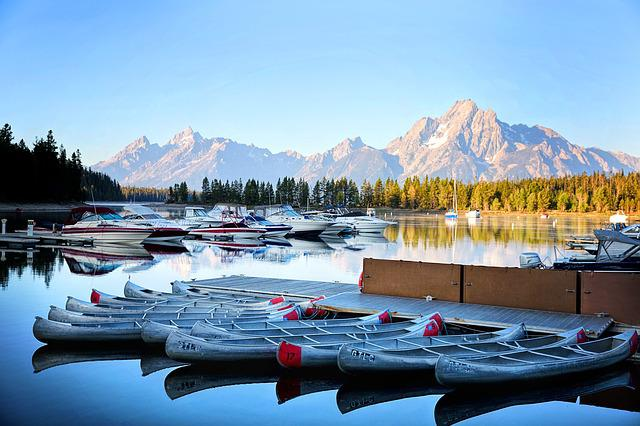
Go Hiking & Camping In The Wilderness
Spread throughout Grand Teton National Park you will find 29 hiking trails covering roughly 200 miles (320 km), with varying levels of difficulty from easy to extremely challenging. Some are short jaunts through the scenery, while others go on for miles or rise for thousands of feet.
These provide those with an adventurous spirit the chance to get off of the beaten path and discover the most beautiful landscapes and wildlife of the region, without being constantly surrounded by other people. Biking is also allowed on most of the trails as well.
Those who don’t want to cut their trip short or who want to truly immerse themselves in their natural location will also find almost 2,000 campsites spread across various campgrounds.
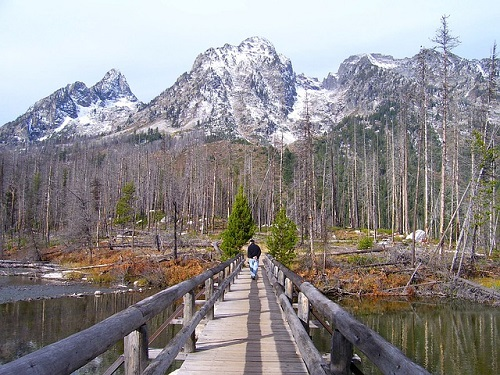
Try Your Hand At Some Of The Winter Sports & Activities On Offer
If you do decide to visit Grand Teton National Park during the winter, you will have a very different experience. Covered by heavy snow for 5 to 6 months each year, the park transforms itself into a hotspot for winter sports and activities, allowing you to enjoy a different kind of adventure.
Cross country skiing and snowshoe trekking are the most popular winter activities in Grand Teton National Park. With large areas closed to vehicular traffic, it gives you a great chance to explore the park in a new and exciting way.
Ranger guided snowshoe tours are even offered, for those who want a more in depth experience. More high paced activities like snowboarding and downhill skiing can also be enjoyed at ski resorts littered throughout the area.
Ice fishing is another popular winter activity in Grand Teton National Park. This is allowed on many of the park’s lakes and camping near the locations is also often possible. However, permits for both of these activities will be required.
Snowmobile use is also allowed in some areas of Grand Teton National Park, although this is heavily controlled. Restrictions cover both the type of snowmobiles permitted, as well as where they can be used, which is mostly between park entrances, campgrounds, and ice fishing spots.
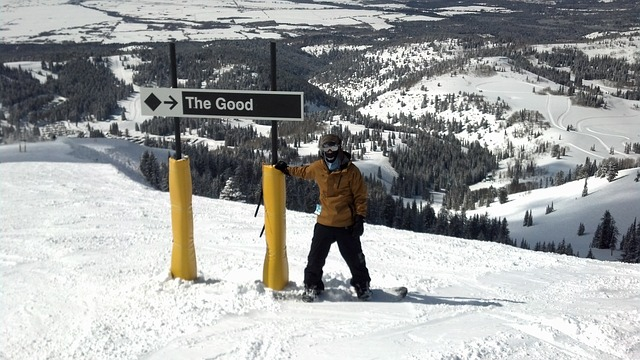
Things To See And Do Near Grand Teton National Park
Grand Teton National Park is a truly a wonderful natural destination, filled with beautiful sights and sounds. However, it isn’t the only thing worth seeing in the region.
We will now look at the best things to see and do near Grand Teton National Park, to help you plan the most comprehensive travel itinerary possible.
Spend A Day In Jackson
Wyoming’s 10th most populous town, Jackson is a historic town synonymous with western culture. It has been used for shooting western TV shows and movies through the years, like John Wayne’s first starring role in 1930, “The Big Trail”, and is immensely popular with tourists.
Jackson Town Square is a park at the heart of the town that features the iconic elk antler arches Jackson is known for. This is then surrounded by western themed bars, shops, and restaurants, as well as attractions like the Stagecoach Ride and Million Dollar Cowboy Bar.
You even have the National Museum Of Wildlife Art and its collection of paintings and sculptures, as well as America’s largest elk herd, the National Elk Herd, just outside the town.
Home to around 7,500 elk, depending on when you go, you can see the animals or enjoy seasonal activities like Elkfest or sleigh rides.
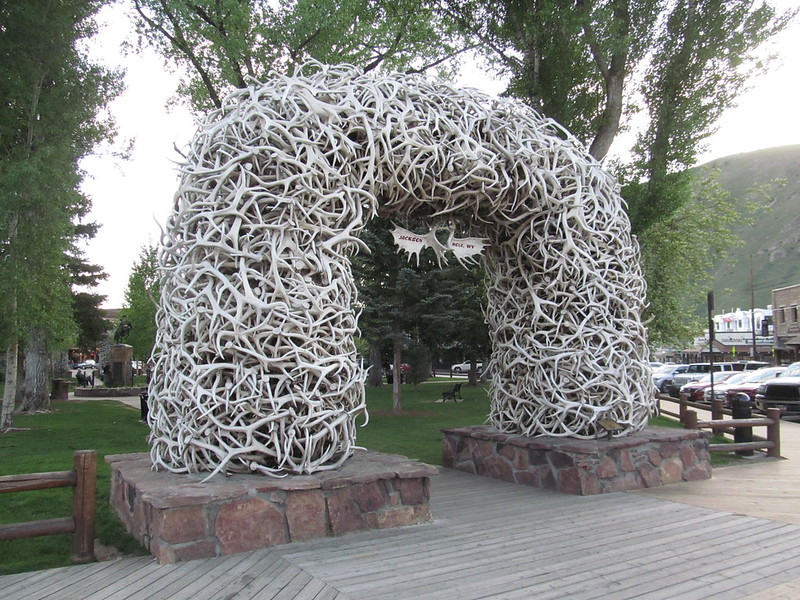
Explore Yellowstone National Park
The oldest, 3rd most popular, and 8th largest national park in the nation, Yellowstone National Park is full of iconic landscapes and wildlife.
It also features a range of attractions that includes Grand Prismatic Spring, Excelsior Geyser, and the Old Faithful Geyser and Old Faithful Historic District.
Unquestionably one of the most amazing natural areas in the entire United States, almost all visitors to Grand Teton National Park make the 10 minute drive along the John D. Rockefeller Jr Memorial Parkway that is required to visit Yellowstone National Park for themselves.
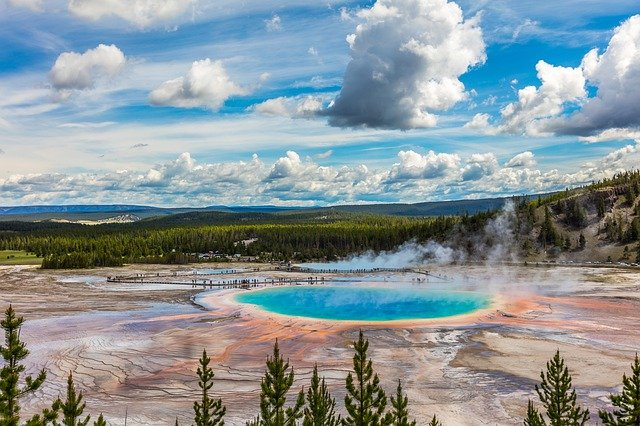
Visit The Bridger-Teton National Forest
Bridger – Teton National Forest covers 3.4 million acres, making it the 4th largest national forest in the contiguous U.S. and 6th largest in the country. It spans the area from Grand Teton to Yellowstone National Park, and covers parts of the Teton, Wyoming, Wind River, and Salt River ranges.
Located on the continental divide, it features the Bridger, Teton, and Gros Ventre wilderness areas, which cover 1.2 million acres. These include 40 named mountains, like Wyoming’s tallest mountain, the 13,804 foot (4,207 metre) Gannett Peak, and one of largest visible landslides in the world.
Other features include 1,500 lakes, 27 glaciers, 3 major rivers, 2,000 miles (3,200 km) of hiking trails, numerous streams, 355 species of birds, 75 species of mammals, and various amphibians, fish, and lizards.
This has all made Bridger – Teton an immensely popular destination for activities like backpacking, boating, camping, and hiking.
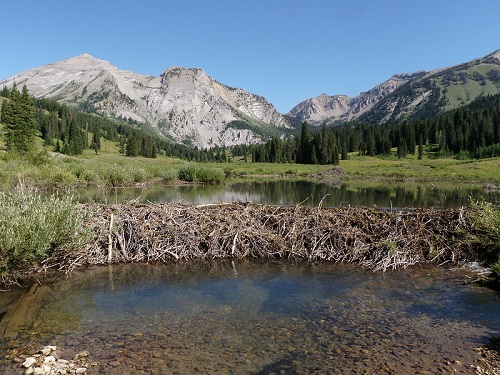
Best Place To Stay Near Grand Teton National Park – Cowboy Village Resort
Located on the northern edge of Jackson, the Cowboy Village Resort offers convenient access to Grand Teton National Park and features a cowboy theme that helps you to immerse yourself in the spirit of the region.
The property is a rustic lodge, where guests will get to stay in their own private western style cabins, surrounded by 4 acres of forest. Each is filled with home comforts, luxury furniture, a kitchenette, spacious living areas, and plenty of amenities like a TV and tea and coffee making facilities.
The property itself then features a swimming pool, outdoor deck, barbeque grills, and picnic area. Free Wi-Fi is available throughout the site, and free parking and a concierge service are offered to all guests, while the entire hotel is pet friendly.
A free daily continental breakfast and ski shuttle service is also provided each winter.
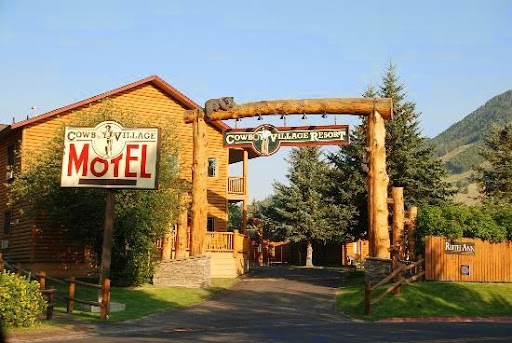
How Many Days To Spend In Grand Teton National Park
Most people will want to spend one full day in Grand Teton National Park. This will give you plenty of time to do the Grand Teton Scenic Drive, study the historic buildings and exhibits in the visitor centres, take a short hike, and spend some time relaxing and taking in the natural beauty.
Those who want to do some serious climbing or go on some of the longer hikes may want to add an additional day or two, to ensure they have enough time to do so. However, 3 full days should be more than enough for the vast majority of people.
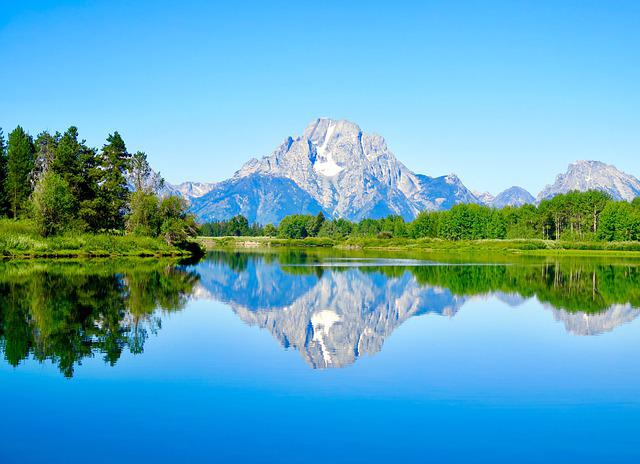
Conclusion
Grand Teton National Park is a truly stunning destination and easily one of the best attractions in Wyoming. This guide will hopefully have given you everything you need to plan your perfect vacation to this amazing natural beauty spot.
From when to go, how long for, and the best way to get there to what to see and where to stay when you arrive, you can now design your dream travel itinerary.
All you have left to do is get things booked, so you can start looking forward to when you visit Grand Teton National Park yourself.


